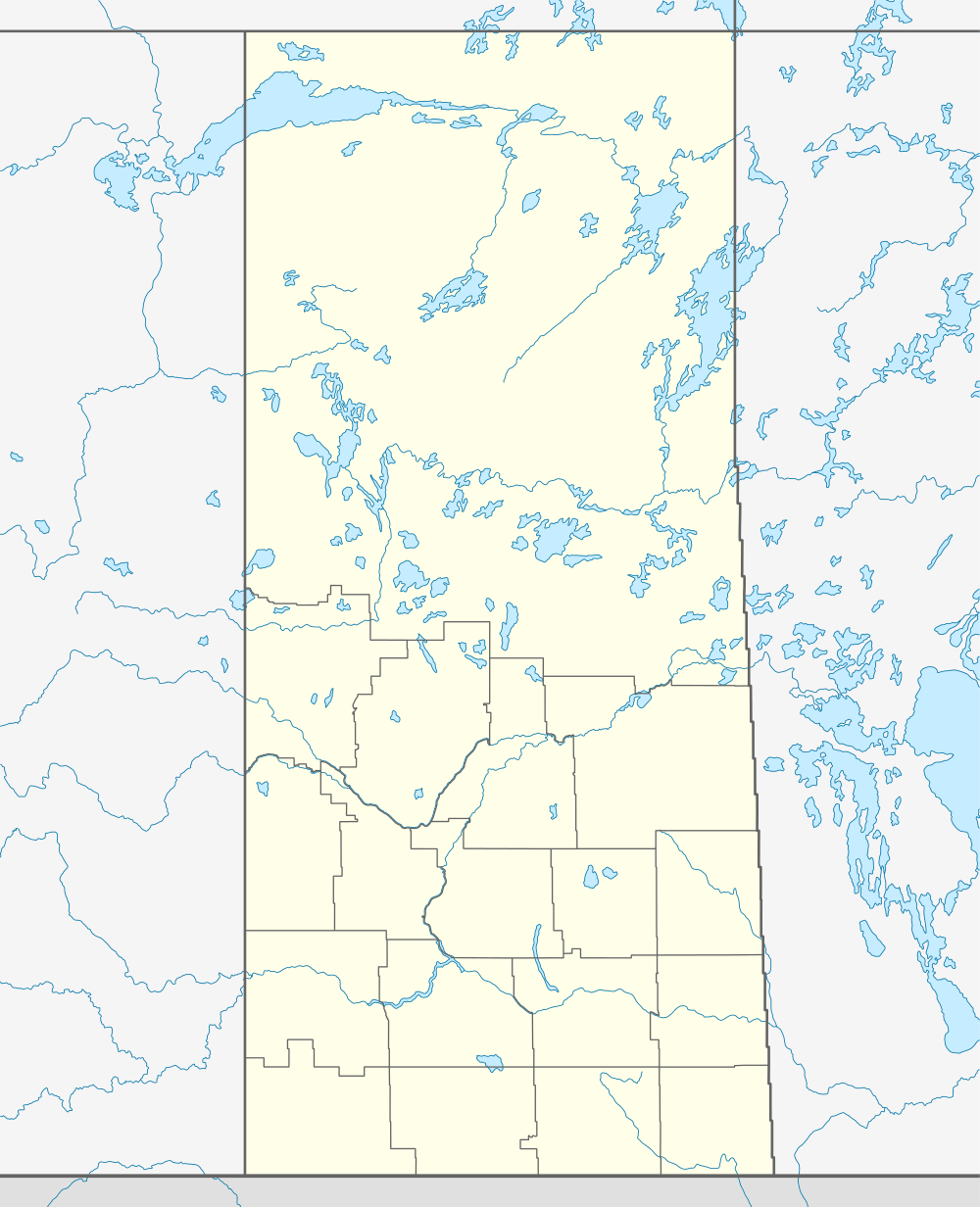Vanguard, Saskatchewan
| Vanguard | |
|---|---|
| Village | |
| Motto: A Proud Past & A Promising Future | |
 Vanguard | |
| Coordinates: 49°54′32″N 107°15′25″W / 49.909°N 107.257°W | |
| Country | Canada |
| Province | Saskatchewan |
| Region | Canadian Prairies |
| Census division | No. 3 |
| Rural Municipality | No. 106 |
| Post office Founded | N/A |
| Village Incorporated | 1912 |
| Town Incorporated | N/A |
| Government | |
| • Mayor | Allen Kuhlmann |
| • Village Administrator | Sandra Krushelnicki |
| • Governing body | Vanguard Village Council |
| Area | |
| • Total | 1.86 km2 (0.72 sq mi) |
| Population (2001) | |
| • Total | 187 |
| • Density | 100.4/km2 (260/sq mi) |
| Time zone | CST |
| Postal code | S0N 2V0 |
| Area code(s) | 306 |
| Highways |
Highway 43 Highway 4 |
| Website | Vanguard, Saskatchewan |
Founded in 1912, the village of Vanguard, Saskatchewan is located in the southwest corner of Saskatchewan on Highway 43 close to Notekeu Creek. It is located in the rural municipality of Whiska Creek. Its prime economic driver is agriculture: chick peas; lentils; red, spring, hard and durum wheats are grown here.
Education
Vanguard is the home of Vanguard Community School with specialist teachers, low student-teacher ratio, and an enrollment of approximately 90.
Attractions
Nearby communities are Pambrun (home of Millar College of the Bible), Gravelbourg (renowned for its French heritage and cathedral), Swift Current (the regional "headquarters"), Hodgeville ("home" of the Saskatchewan flag) and Ponteix (close to Notekeu Regional Park). Vanguard is close to Cypress Hills inter-provincial park, Grasslands National Park, the Canada–US border, and Lac Pelletier regional park.
History
In 1910, the Canadian Pacific Railway purchased the land which became the village of Vanguard from Latimer Young. The origin of the name Vanguard may be attributed to it having been on the vanguard of the railway in 1912 ; however, Vanguard is also a proud name in the Royal Navy tradition. Lord Horatio Nelson had a Vanguard; the last dreadnought battleship (scrapped in 1960) was also called the Vanguard. Recent publications state that the inspiration for the name of the village came from the HMS Vanguard which was commissioned in 1909 and exploded in 1917, killing 843 of the 845 men aboard. Regardless of the true origin of the name, the north-south streets in Vanguard reflect the naval heritage, being named Armada, Victory, Triumph, Drake and Nelson Streets. The east-west streets are named in honor of the province (Saskatchewan Ave.), the landscape in which Vanguard is situated (Prairie Ave.), the rail heritage (Railway Ave.) and the hopeful spirit in which Vanguard was established (Progress Ave.). Vanguard is bisected by Division St. and the main street is called "Dominion".
Notable people
Author, broadcaster, and journalist James Minifie (1900–1974) called Vanguard home. He worked for the New York Herald Tribune and was the Washington correspondent for the CBC. Knowlton Nash described Mr. Minifie as: "a man passionately dedicated to improving the quality of journalism [whose] overwhelming desire was accuracy in reporting". Woodrow Lloyd, former premier of Saskatchewan, was a principal in Vanguard. NHL goaltender, Al Rollins, was born in Vanguard.
Demographics
| Canada census – Vanguard, Saskatchewan community profile | |||
|---|---|---|---|
| 2001 | |||
| Population: | 187 (- 9.7% from 1996) | ||
| Land area: | 1.86 km2 (0.72 sq mi) | ||
| Population density: | 100.4/km2 (260/sq mi) | ||
| Median age: | 47.5 (M: 47.0, F: 47.5) | ||
| Total private dwellings: | 102 | ||
| Median household income: | |||
| References: 2001[1] | |||
See also
References
- ↑ "2001 Community Profiles". Canada 2001 Census. Statistics Canada. February 17, 2012.
External links
Coordinates: 49°54′32″N 107°15′25″W / 49.909°N 107.257°W
